Have you ever dreamed of exploring the hallowed grounds of Camp Nou, the legendary home of FC Barcelona?
Get ready for a once-in-a-lifetime experience as you walk in the footsteps of iconic players, relive unforgettable moments, and immerse yourself in the rich history of this world-renowned stadium.
- Explore the iconic Camp Nou stadium and experience its legendary legacy!
- Relive FC Barcelona’s European Cup triumphs & El Clásico matches against Real Madrid!
- Tour the grounds, visit the Museum, explore transportation options & stay close to enjoy an unforgettable journey into Barça history.
The Legacy of Camp Nou
Camp Nou, also known as Estadi del FC Barcelona, has a legendary legacy that includes European Cup triumphs, unforgettable matches against Real Madrid, and a rich history of legendary players and events. With a seating capacity of 99,354, it’s no surprise that Camp Nou holds a special place in the hearts of football fans around the world.
As the largest stadium in Europe and the third-largest in the world, Camp Nou has hosted numerous prestigious events, contributing to its iconic status on the global stage. Yet, Camp Nou stands as more than a mere stadium; it serves as a living tribute to the club’s history and its influence on global football. Since its inaugural match in 1957 to the anticipated renovation completion in the 2025-26 season, Camp Nou has experienced consistent evolution and growth to meet the escalating requirements of Barcelona’s passionate supporters and global adoration for this iconic venue.
European Cup Triumphs
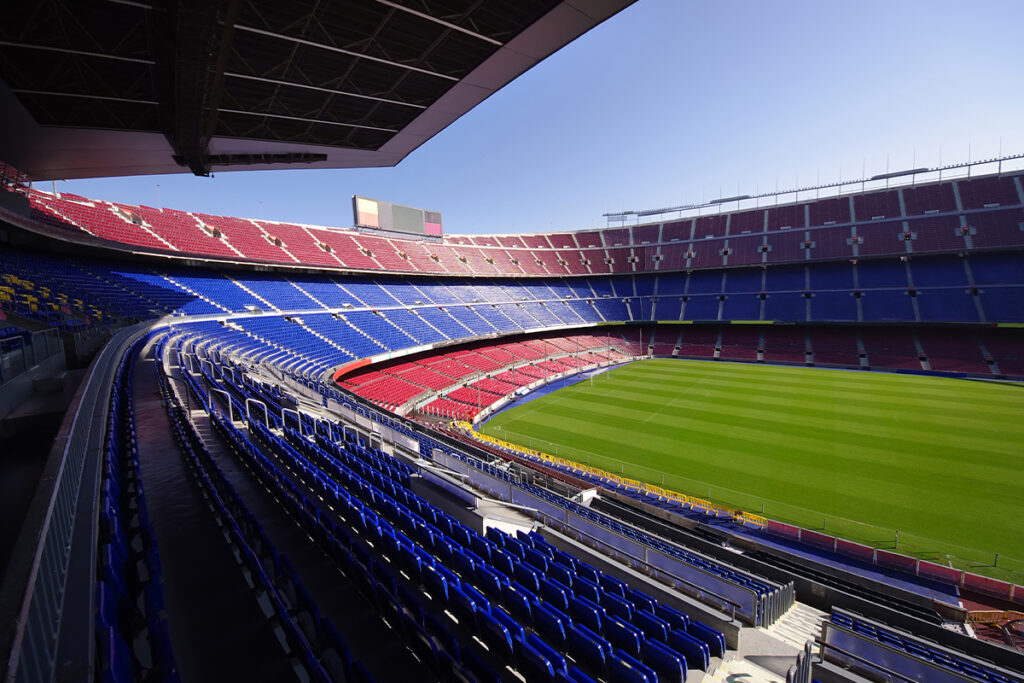
The European Cup victories at Camp Nou are an integral part of the stadium’s storied history. From the thrilling final of the European Cup Winners’ Cup in May 1972, where Rangers triumphed over Dynamo Moscow 3-2, to the incredible five UEFA Champions League titles, these achievements have elevated the club’s status and reputation worldwide.
Legendary players like Lionel Messi, Luis Suárez, Neymar, Xavi, Andres Iniesta, Johan Cruyff, and Josep Guardiola have all contributed to the club’s European Cup triumphs at Camp Nou. These unforgettable victories showcase FC Barcelona’s success on the international stage, attracting global attention and admiration, and leading to increased recognition and awareness of Camp Nou as the home stadium of a highly successful and prestigious football club.
Iconic Matches Against Real Madrid
The fierce rivalry between FC Barcelona and Real Madrid has resulted in innumerable legendary matches at Camp Nou. A few of the most unforgettable bouts include:
- Real Madrid’s record-breaking 11-1 victory in 1943
- Barcelona’s commendable 2-0 win in the 2010-11 UEFA Champions League semifinals
- The electrifying Spanish Super Cup semi-final in January 2022, where Real Madrid secured a win.
These iconic matches have greatly influenced the rivalry between the two teams, fueling the passion and animosity between the clubs and their fans. The intense competition on the field, combined with historical and political context, has made ‘El Clásico’ a global phenomenon. Camp Nou, also known as Camp Nou Stadium, has been the stage for many of these unforgettable moments, adding to its storied history and significance in football.
The Stadium’s Evolution
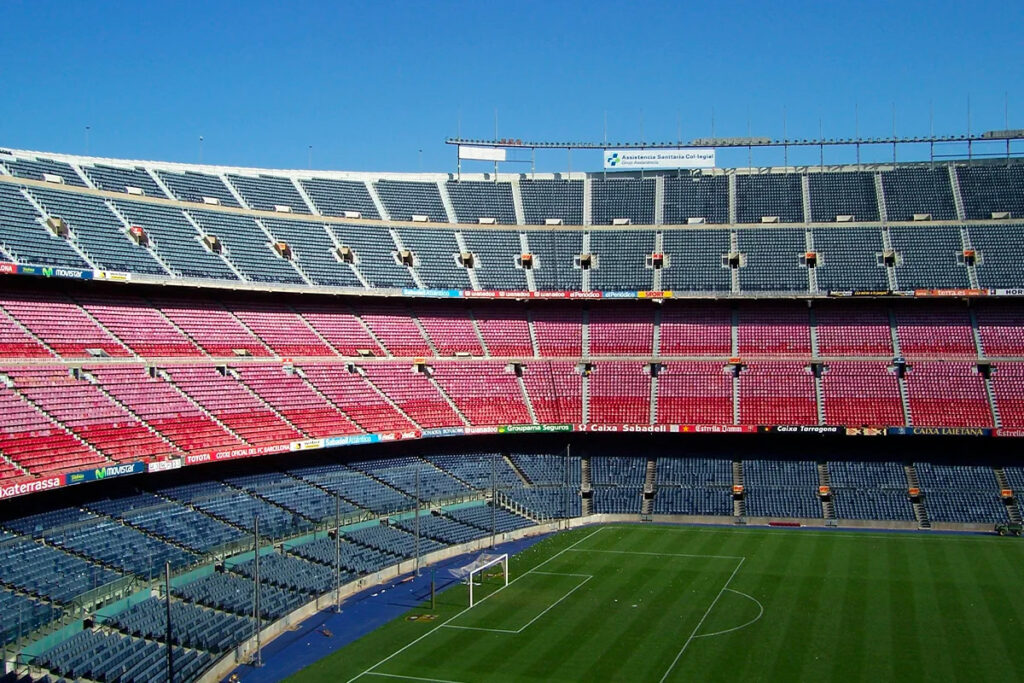
Before Camp Nou, FC Barcelona called Les Corts Stadium home. Inaugurated in 1922, Les Corts served the club until its move to Camp Nou in 1957. Several renovations increased the seating capacity of Les Corts from 25,000 to 60,000 spectators. However, further expansion was not possible, prompting the need for a new stadium with a more spacious side’s changing room.
Construction of Camp Nou commenced on March 28, 1954, and it is presently undergoing significant renovation work that initiated on June 1, 2023. Designed by renowned architects Nikken Sekkei and b720 Fermín Vázquez Arquitectos, Camp Nou has evolved from its humble beginnings at Les Corts to become one of the world’s most famous stadiums, reflecting the growth and development of FC Barcelona as a club and its impact on the city of Barcelona.
From Les Corts to Camp Nou
The decision to move from Les Corts to Camp Nou was a significant milestone in FC Barcelona’s history. The old Les Corts ground could no longer accommodate the growing fan base, and the club needed a larger, more modern stadium to compete with other top teams and provide an enhanced experience for its supporters.
Funded by an impressive financing deal worth 1.45 billion euros ($1.6 billion), the construction of Camp Nou marked the beginning of a new era for FC Barcelona. The stadium’s design, initially developed by Nikken Sekkei and b720 Fermín Vázquez Arquitectos and later restructured by Norman Foster and Foster + Partners, embodies the spirit of innovation and progress that defines the club. From Les Corts to Camp Nou, the evolution of the stadium showcases the growth, development, and impact of FC Barcelona on the city of Barcelona and the world of football.
Touring the Hallowed Grounds
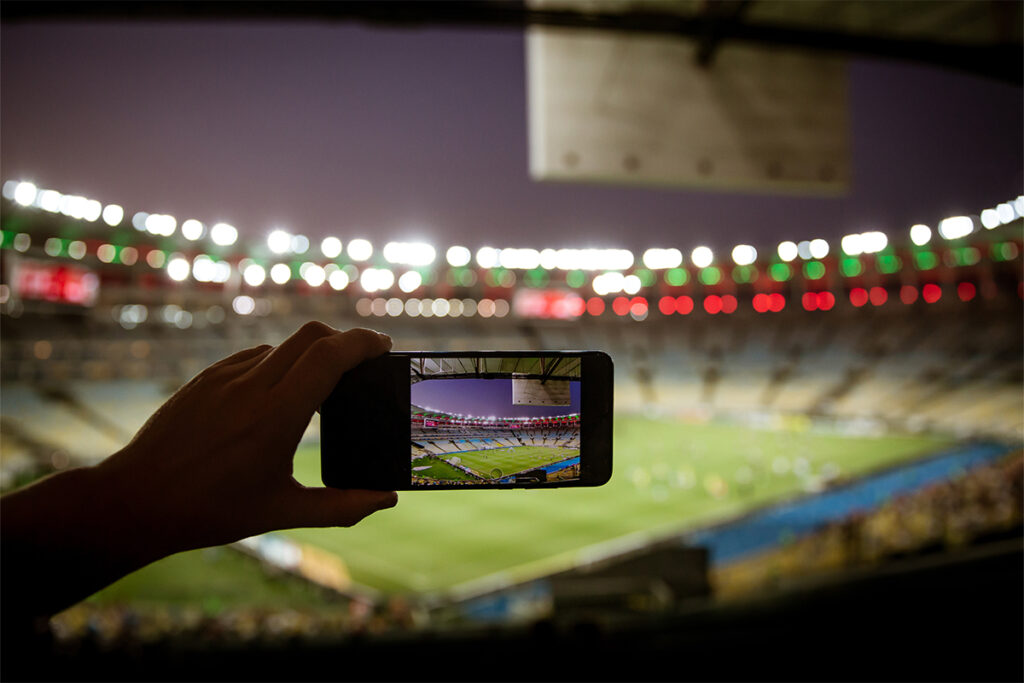
Visiting Camp Nou presents a distinctive chance to investigate the revered grounds of this legendary stadium. Whether you’re a die-hard FC Barcelona fan or a casual football enthusiast, touring Camp Nou is an experience you won’t want to miss. With a range of tours and experiences on offer, visitors can choose between basic and immersive tours, walk through the players’ tunnel and team dugout, and even explore the press box and commentary boxes.
The Camp Nou Tour includes a visit to the exhilarating FC Barcelona stadium, the fascinating museum, and the amazing FCB Megastore. Each tour offers a different level of access and experience, allowing visitors to get up close and personal with the club’s history, legendary players, and iconic moments that have shaped the world of football.
Basic and Immersive Tours
For those looking for a more casual experience, the basic tour at Camp Nou includes a self-guided tour of the stadium and access to the Barça Museum. This tour allows visitors to explore the stadium at their own pace, taking in the sights and sounds of this iconic venue. The basic tour typically lasts around one hour and offers a glimpse into the club’s history and achievements.
For a more in-depth and engaging experience, the immersive tour offers access to exclusive areas of Camp Nou, such as the home changing room and a massive immersive audiovisual space. Lasting around 1.5-2 hours, the immersive tour provides a more interactive experience, including the use of VR glasses and multimedia audio-guides that bring the club’s history to life. Whether you choose the basic or immersive tour, a visit to Camp Nou is a must for any football fan. Don’t forget to check out the Spotify Camp Nou playlist to get in the spirit before your visit.
Players’ Tunnel and Team Dugout
Strolling through the players’ tunnel and team dugout at Camp Nou provides a memorable experience, offering a chance to walk in the footsteps of past champions. The tunnel is spacious and well-lit, allowing players to enter the pitch with confidence and focus, while the team dugout is strategically positioned near the pitch, providing the coaching staff and substitutes with a clear view of the game.
Legendary players such as Ladislao Kubala, Lionel Messi, Ronaldinho, Rivaldo, Maradona and Samuel Eto’o. Have all walked through the Camp Nou players’ tunnel and team dugout. As you make your way through the tunnel and sit where the players and coaches strategize, you’ll feel the energy and excitement of the stadium, imagining the roar of the crowd on matchday, especially during an opening game.
Press Box and Commentary Boxes
The press box and commentary boxes at Camp Nou provide an exclusive backstage view into how the media covers matches at this legendary stadium. With a total of 28 commentary boxes, 192 work desks, and two television studios, the press box is equipped with the latest wireless technology for accredited media personnel.
From the Pope John Paul II celebrating Mass for a congregation of over 121,500 in 1982 to the 1982 World Cup, the Camp Nou press box has covered incredible events and witnessed the highs and lows of the club’s history. As you explore the press facilities and take in the panoramic view from the commentary boxes, you’ll gain a newfound appreciation for the journalists and commentators who bring the magic of FC Barcelona to fans around the world.
The FC Barcelona Museum
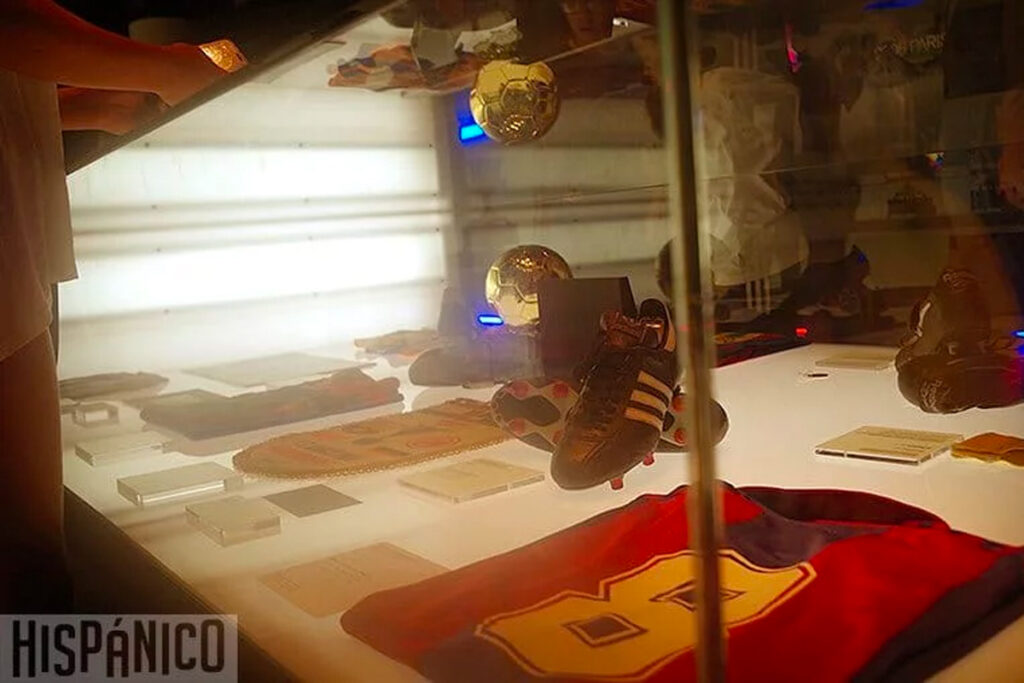
Any visit to Camp Nou should certainly include a trip to the FC Barcelona Museum, a repository rich with the club’s history and accomplishments. The museum showcases the club’s rich history through a stunning collection of trophies, memorabilia, and multimedia exhibits that celebrate the club’s impact on the world of football.
From Joan Miró’s poster and Salvador Dalí artwork to the Futbolart Collection, which showcases football memorabilia from the club, the FC Barcelona Museum offers visitors an unforgettable journey through the club’s storied past. With a range of exhibits and displays, the museum is a must-see attraction for any football fan visiting Barcelona.
Trophies and Memorabilia
The FC Barcelona Museum houses an extensive collection of trophies and memorabilia, including the cups of the 26 championships (La Liga), the 31 Spanish Cups, the five European Cups, signed memorabilia, football boots and gloves, footballs, photographs and artwork. These items highlight the club’s history, showcasing the achievements and iconic moments of the first team.
The key trophies displayed at the FC Barcelona Museum represent the team’s rich history and track record of sports achievements. From the four European Cup/Champions League titles won in Wembley (1992, 2011), Paris (2006), Rome (2009), and Berlin (2015) to the La Liga and Copa del Rey trophies, visitors can marvel at the club’s accomplishments and the legendary players who have shaped its history.
Multimedia Experience
The multimedia experience at the FC Barcelona Museum offers visitors an interactive and engaging way to learn about the club’s history and its impact on the world of football. The multimedia experience includes holographic technology, immersive technology, deep fake technology, interactive murals, large-format audiovisuals and interactive and audiovisual installations. These technologies bring the club’s history to life and create an unforgettable experience for visitors.
Visitors can explore large interactive walls that access a database of images from the club’s past, watch documentaries and audiovisual content related to the club, and even use VR glasses and multimedia audio-guides for an enhanced experience. The multimedia experience at the FC Barcelona Museum offers an unforgettable journey into the heart of the club’s history, making it a must-visit attraction for any football enthusiast.
Getting to Camp Nou
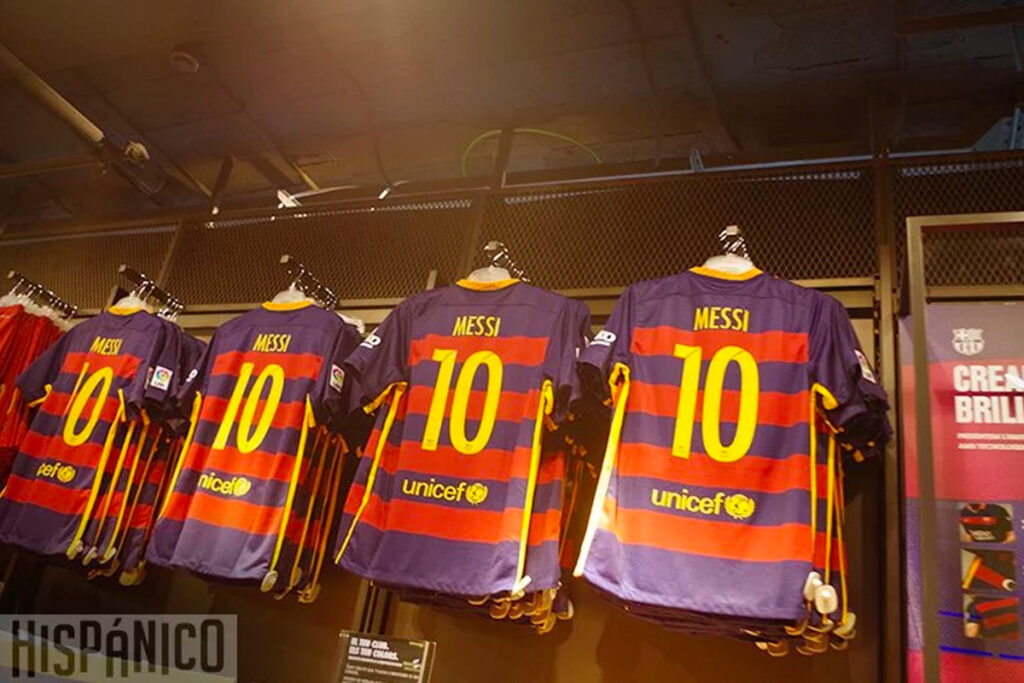
Reaching Camp Nou is straightforward and convenient, owing to the variety of transportation options, proximate accommodations, and details on opening hours and optimal visit times. Whether you choose public transit, taxi, or private vehicle, getting to this iconic stadium is simple and stress-free.
This section will cover various ways to reach Camp Nou, suggest proximate accommodations, and offer tips for optimizing your visit. With a little planning and preparation, your trip to Camp Nou will be an experience you’ll never forget.
Transportation Options
There are several transportation options available to get to Camp Nou, making it accessible for all visitors. The nearest metro station to Camp Nou is Collblanc, on the blue metro line. In addition to the metro, the stadium is served by several TMB bus routes and an AMB line, providing efficient public transit options.
For those who prefer to travel by taxi, a ride from central Barcelona to Camp Nou typically costs around 20 Euros. Alternatively, bike rental services such as Barcelona Rent a Bike, Donkey Republic, and A-Bike Rental & Tours are available near the stadium for those looking to explore the city on two wheels. Finally, there are numerous parking options for private vehicles, including car parks near the stadium and shopping centers with their own parking facilities.
Nearby Accommodations
For visitors looking to stay close to the stadium, there are numerous accommodations available near Camp Nou. Top-rated hotels in the area include Catalonia Rigoletto, Hotel Alguer Camp Nou, and Hotel SOFIA Barcelona. Vacation rentals are also available, starting at $86 per night.
In addition to hotels and vacation rentals, there are family-friendly accommodations such as Hotel SOFIA Barcelona in The Unbound Collection by Hyatt, Apartamentos Turísticos Tenor, and Catalonia Rigoletto. For those seeking unique or boutique accommodations, options include Catalonia Rigoletto, Hotel Alguer Camp Nou, and Hotel SOFIA Barcelona in The Unbound Collection by Hyatt.
Opening Times and Best Times to Visit
Camp Nou’s operating hours change seasonally, so it’s advisable to plan your visit accordingly. During peak tourist season, the waiting time to buy a ticket at the stadium ticket office can vary between one and two hours. To avoid queues, it’s best to buy tickets in advance and visit the stadium during off-peak hours or during the evening, from 4:00 pm onwards.
On match days, the stadium tours are not available, and only the FC Barcelona museum is open. It is highly recommended to check the Camp Nou stadium’s opening hours and match schedules to avoid disappointment and ensure a smooth and enjoyable visit.
Summary
In conclusion, a visit to Camp Nou is a thrilling and unforgettable experience for football fans and casual visitors alike. From its rich history and iconic status to the immersive tours and world-class museum, Camp Nou offers a unique glimpse into the heart of FC Barcelona and the world of football. Don’t miss the opportunity to walk in the footsteps of legends and explore one of the world’s most famous stadiums.
Practical info
It’s best to buy tickets to Camp Nou in advance. You will then avoid standing in a long queue and avoid the risk that all tickets have been sold out, which happens very often in the case of this monument.
- Opening hours: In the period between 2 April – 7 October Monday to Saturday 10:00 AM to 8:00 PM. On Sundays and public holidays 10:00 AM to 2:30 PM. From November to March Monday to Saturday 10:00 AM to 6:30 PM. On Sundays and public holidays 10:00 AM to 2:30 PM.
- Address: C/ d’Arístides Maillol, 12, Les Corts, 08028 Barcelona, Spain
- Buy Tickets on GetYourGuide
Camp Nou on a map
Discover Catalonia
Each region of Spain is divided into provinces. Their names often coincide with the names of their main cities. Catalonia is divided into four provinces, each of which has different tourist attractions and interesting places to offer:| Province | Tourist attractions and interesting places |
| Barcelona | Gothic Quarter Barri Gòtic, La Rambla, Montjuïc, cable railway Telefèric de Montjuïc, Magic Fountains (Font Màgica), La Boqueria, Laberint d’Horta Park, Poble Espanyol, Camp Nou, Torre Agbar, oceanarium in Barcelona, Barcelona Zoo, Tibidabo Amusement Park, Palace of Catalan Music, National Art Museum of Catalonia, Picasso Museum, Catalan Museum of Archaeology, Miniature Park - Catalunya en Miniatura, MACBA Museum of Contemporary Art of Barcelona, Generalitat Palace, Basilica of Our Lady of Mercy (La Mercé), Cathedral of Barcelona, remains of the temple of Augustus, Els Quatre Gats Cafe, Erotic Museum, Santa María del Mar Church, Port Vell, Plaça de Catalunya, Parc de la Ciutadella, Parc de Collserola, Casa Amatller, Palau Güell, Passeig de Gràcia - luxury street in Barcelona, Montserrat Monastery. Barcelona's neighborhoods and districts (El Raval, El Born, Sant Pere, Les Corts). Gaudi's Monuments: Sagrada Familia, Park Güell, Casa Milà, Casa Batlló, Pabellones Güell, Bellesguard, Casa Vicens, Casa Calvet. Popular cities: Barcelona, Torrelles de Llobregat, Hospitalet de Llobregat, Tarrasa, Badalona, Sabadell, Mataró, Santa Coloma de Gramanet, San Cugat del Vallés, Cornellá de Llobregat, San Baudilio de Llobregat, Rubí, Manresa, Villanueva y Geltrú, Viladecans, Casteldefels, El Prat de Llobregat, Granollers, Sardañola del Vallés, Mollet del Vallès, Gavá, Sant Antoni de Vilamajor |
| Girona | Salvador Dali Museum, Museum of Miniatures and Microminiatures Micro Mundi, Sausage Museum. Popular cities: Girona, Figueres, Besalú, Blanes, Lloret de Mar, Tossa de Mar, Olot, Salt, Palafrugell, San Felíu de Guixols, Rosas, Bañolas, Palamós, Santa Coloma de Farnés, Castellón de Ampurias Torroella de Montgrí, La Bisbal del Ampurdán, Ripoll, Castillo de Aro, Calonge, La Escala, Cassá de la Selva, Castellfollit de la Roca |
| Lleida | Popular cities: Lleida, Tárrega, Balaguer, Mollerusa, La Seo de Urgel, Cervera, Solsona, Alcarrás, Guisona, Almacellas |
| Tarragona | Amusement and theme parks: PortAventura. Popular cities: Tarragona, Reus, Vendrell, Tortosa, Cambrils, Salou, Valls, Calafell, Amposta, Vilaseca |


